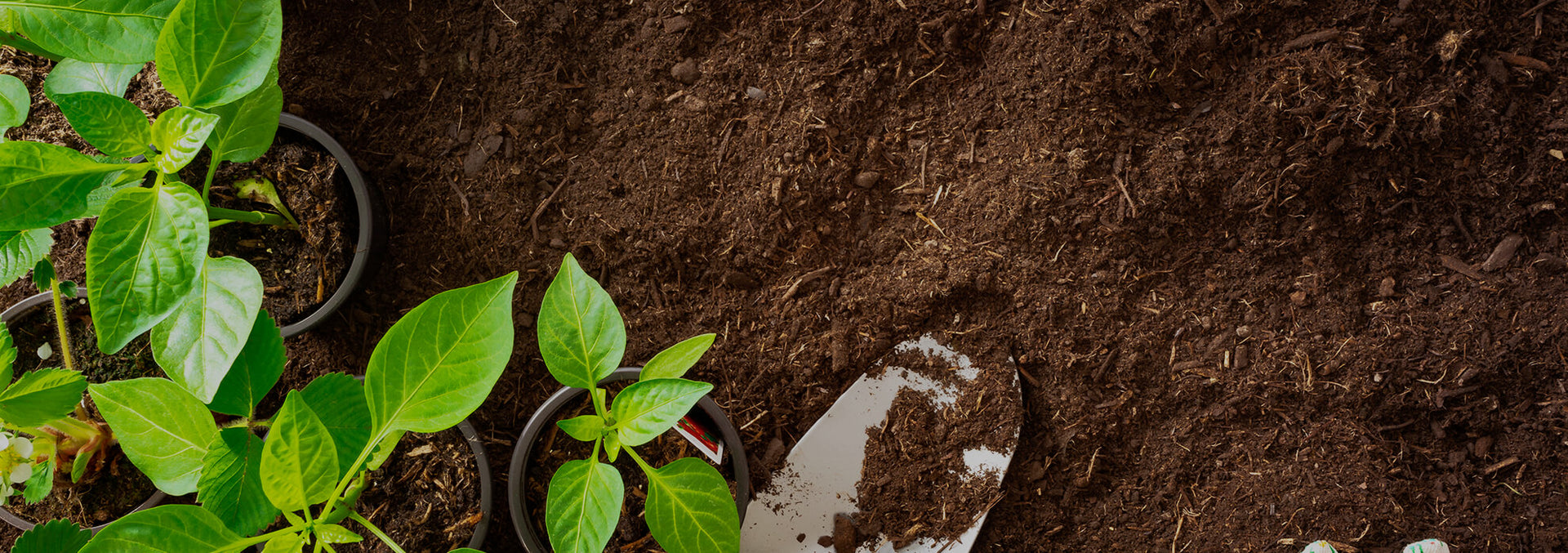
4 Common Gardening Tips You Should Avoid!
We hear an endless supply of gardening tips from our friends, neighbors, Facebook posts, and YouTube videos. But how do you know which ones are harmful and which ones are actually helpful? We are going to help you out by breaking down fact from fiction. Looking at four common gardening tips that all center around soil drainage and healthy soil, let’s discover what advice you should follow and which tips you should avoid.
Tip 1: You Should Put Gravel In The Bottom Of Your Pot To Improve Drainage
False! Adding rocks or gravel at the bottom of your pot does not improve the drainage of your soil. In every gardening situation we want to avoid interfaces. An interface is when you have a material of a certain texture interfacing with a completely different texture. If you have gravel at the bottom of your pot and fill the rest with potting soil, the potting soil will not drain into and through the gravel until the top layer (which is a completely different texture) becomes saturated. We don’t want saturation, we want drainage! You are actually impeding drainage when you add a layer of gravel or rock to the bottom of your potted plant.
The one situation where it is acceptable to add rocks to a pot is if you want to diffuse the way the water rushes through the bottom drainage hole. You can place a few large rocks over the drainage hole at the bottom of your pot and then add your potting soil on top. This way you have not created any major interface and have not impeded the soil drainage.

Tip 2: You Should Amend Plant Backfill
Not true! Imagine you dig a hole in your soil to place your plant but the dirt hole has very firm sides and a firm bottom. What happens here, just like with gravel at the bottom of a pot, is you create an interface. You have a completely different textured soil going up against the native soil; the native soil is where we want the plants to root out into. In order to plant your plants without creating problematic interfaces, use only the native soil for the backfill with the addition of John & Bob’s Blend (or use a high quality compost). This addition will infuse your native soil with beneficial bacteria, minerals, and organic nutrients without creating an interface that could prevent proper drainage and the plant from rooting properly. If you have a soil mix you want to use for the backfill you should mix it with some of the native soil before filling the hole. This combination will help minimize any problematic interfaces as well.

Tip 3: Add Sand To Clay Soil To Improve Drainage
Incorrect! Sand will not improve your clay soil. It is physically impossible to use enough sand in soil to create anything other than concrete. We want to avoid making bricks so we can grow beautiful flowers and bountiful tomato plants. The most effective way to improve clay soil and improve drainage is with beneficial soil life. First, add John & Bob’s Penetrate Liquid Bio-Tiller to imbue your soil with beneficial bacteria which will kick start the development of complex soil life. Next, add John & Bob’s Blend to infuse your soil further with minerals, nutrients, fungi, protozoa, and beneficial nematodes. These two products, or a high quality compost, are the best way to completely change everything about your clay soil and naturally improve its drainage.
Tip 4: Use Vitamin B1 For Transplanting
Untrue! In the 1930s there were experiments that determined, mistakenly, that applying vitamin B1 to the backfill of plants would help with transplant shock and new root growth. We know from more recent and ongoing testing that vitamin B1 does nothing to help with transplant shock or new root growth. What actually does help, and is arguably the most important thing for transplanting, is to pay close attention to moisture and water. The first few days after transplanting a plant you need to make sure it gets adequate water. The second most important step is to use John & Bob’s smart soil products, or a high quality compost, to provide nutrients and beneficial soil life. Focus on the watering and the general health of the soil to ensure a successful transplant and a happy, healthy plant.

John Valentino adding John & Bob’s Blend to a transplanted tree.
